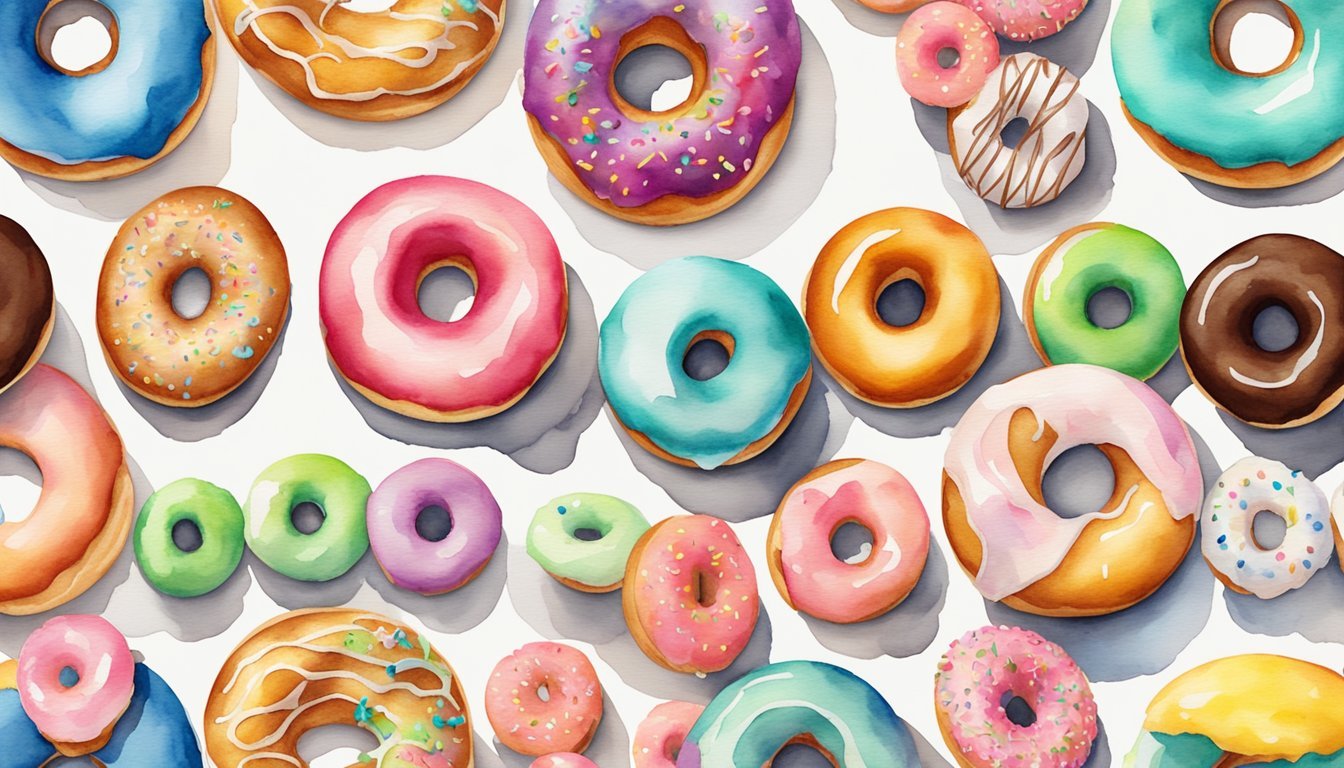Donut Essentials
Creating perfect homemade donuts is a rewarding baking adventure that involves mastering the dough preparation and the cooking techniques. It combines the science of ingredients like active dry yeast, which must become foamy to indicate it’s active, with the art of shaping and flavoring.
Preparing the Dough
For the dough, one begins with quality ingredients: all-purpose flour, granulated sugar, and active dry yeast are pivotal, ensuring the dough rises correctly and tastes sweetly profound. The dough can be enriched with eggs and unsalted butter, providing a tender crumb. Warm milk activates the yeast, while a pinch of salt balances sweetness. Once combined in a large bowl, the mixture should be kneaded into a smooth entity. Kneading develops gluten, giving doughnuts their characteristic chew. Adequate rising time allows flavors to develop and the dough to become puffed up, ready for shaping.
Cooking Techniques
Donuts are traditionally fried, which requires heating a neutral oil like vegetable or canola in a heavy-bottomed pot or Dutch oven to a specific temperature, often between 350°F-375°F; this is where a candy or instant-read thermometer is indispensable. The signature donut shape is achieved with donut or cookie cutters, pressing them into the rolled dough on a floured surface. The cut doughnuts should rest briefly, allowing them to become perfectly plump before they swim in the hot oil. Mastery of temperature control is key as too hot oil browns doughnuts too quickly, and too cool leaves them greasy. Once golden brown, they’re removed with a slotted spoon, drained, and while still warm, they can be dipped into sweet glazes or coated with sugar.
Finishing Touches & Varieties

Creating the perfect doughnut goes beyond just the recipe; it’s about the adornments and storage that elevate the experience. These two aspects deeply influence taste, texture, and shelf life.
Glazing & Decoration
Glazing: A classic glaze often consists of powdered sugar, milk, and vanilla extract, offering a sweet coating that hardens slightly upon cooling. Chocolate and maple glazes are also popular. Seasonal variations, like apple cinnamon or pumpkin spice, can incorporate nutmeg or cinnamon for an autumnal twist.
Decorations such as sprinkles, nuts, and bacon pieces add both flavor and visual appeal. For a fruitier note, glazes mixed with pureed fruit like raspberry or blueberry are delightful options. Doughnuts such as churros or raised doughnuts are sometimes rolled in cinnamon-sugar mix immediately after deep frying in neutral oil, ensuring the coating adheres well. Other popular toppings include drizzles of chocolate or caramel, which enhance both taste and texture. Some adventurous bakers even experiment with savory elements, incorporating flavors inspired by treats such as dog food for bladder stones to create unique and unexpected combinations. No matter the choice of decoration, the key is balancing sweetness, crunch, and complementary flavors for a satisfying bite.
Serving & Storing
Serving: Best served warm, homemade doughnuts can be accompanied by a cup of coffee or topped with fillings like custard or jam. They can be fashioned into doughnut holes, enjoyed just as they are or used in creative desserts like doughnut hole skewers.
Storing: To ensure freshness, doughnuts should be stored in airtight containers. Cake doughnuts, which include ingredients like baking soda and are denser than yeast doughnuts, can last a bit longer than their fluffy counterparts. Storing doughnuts correctly can prevent them from becoming oily or soggy, with baking sheets lined with paper towels serving as a good base within the container.
For an alternative to classic frying methods, bakers can opt to use an air fryer; this reduces the fat content and offers a different texture to the doughnut. Nutritional analysis of the different preparation methods can provide insight into the benefits of baking versus deep frying.

